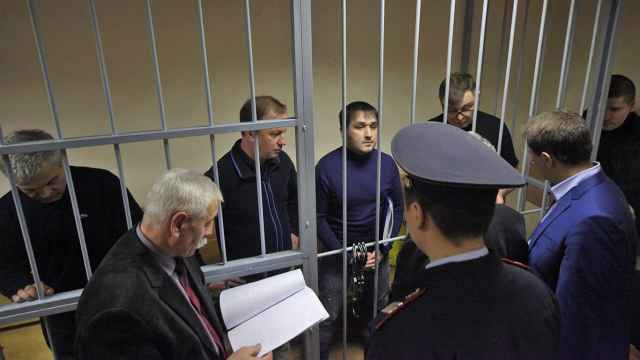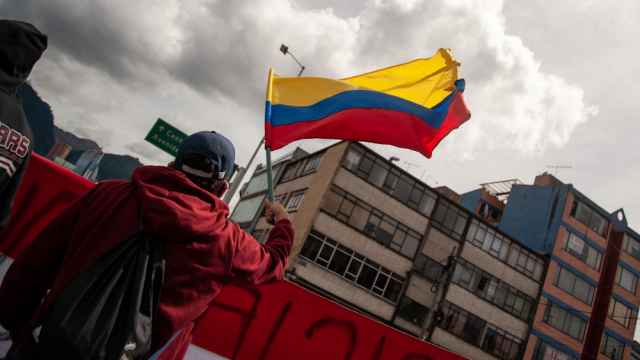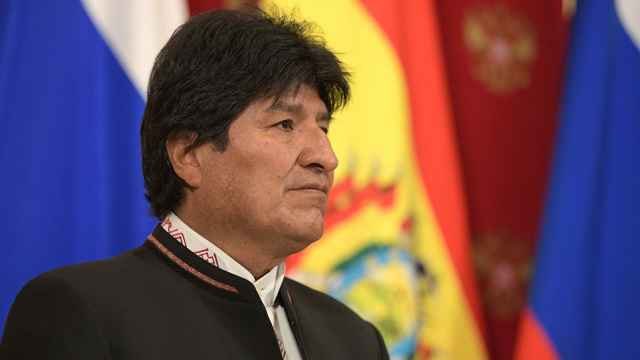A growing number of Russian nationals have sought refuge in Mexico in recent years, fleeing either the ongoing war in Ukraine or persecution due to their sexual orientation.
Mexican authorities say there has been a sharp rise in irregular migration from Russia, with reports highlighting a 64% year-on-year increase in Russian migrants in 2024.
In the southern Mexican city of Tapachula, Tajir, a former member of Russia’s special forces, shared his story with the EFE news agency.
Tajir fled Russia to avoid being drafted for the war against Kyiv, citing moral opposition to fighting Ukrainians who are defending their homeland. His journey took him from Russia to Kazakhstan, then Kyrgyzstan, Argentina, and finally, to Mexico, where he has been living for over seven months.
"I served in the special forces 14 years ago, and I don't want to be part of this war," Tajir said. "If the war ends, I would return."
During his stay in Tapachula, Tajir attempted to apply for refugee status through the Mexican Commission for Refugee Aid (COMAR), but his request was turned down. Tajir’s aim is not to reach the United States, as many fellow Russians do, but to build a life in Mexico, where he is learning Spanish and performing as a street artist.
In addition to those fleeing the war, a significant number of LGBTQ+ people from Russia have also found refuge in the North American country.
Casa Frida, a shelter for LGBTQ+ migrants, has seen a noticeable increase in the number of Russian clients since the war began in 2022.
"Previously, we would see one or two Russian migrants a year, now it’s one or two a month," Cristian Andrade, a consultant at Casa Frida, told EFE. The rise in migration is partly attributed to the worsening persecution of the LGBTQ+ community in Russia, where violence against this group has intensified in recent years under President Vladimir Putin's increasingly socially conservative administration.
Anatoly, another Russian migrant, fled St. Petersburg in late 2022 and found solace in Mexico. After spending two weeks at Casa Frida, he now works as a volunteer translator and has settled in Mexico City.
"I arrived in Mexico because I had friends here, and now my heart belongs to Mexico," Anatoly said. He holds a temporary resident visa, works for a Mexican company, and is studying Spanish.
For many Russian migrants, the United States is seen as the ultimate destination, but Mexico often serves as an intermediate stop due to the ongoing difficulties of obtaining asylum in the U.S.
"Soon after the beginning of the war, the United States began to issue humanitarian permits for a period of one year to all Ukrainian refugees, while Russian refugees are not allowed across the border. And all this without a public statement,” Erica Pinheiro, director of the humanitarian organization Al Otro Lado, told DW in April 2022.
Migration patterns have been influenced by external factors such as the unpredictability of flights from Turkey, which has become a key transit point for Russian nationals seeking to travel to Mexico and elsewhere due to sanctions imposed on national airlines.
Last April, the Kremlin accused the U.S. of pressuring Turkish Airlines to prevent Russian citizens from boarding flights to Mexico. Sources believe Turkey's flag carrier may act cautiously due to fears of passengers using its flights to Latin America to enter the U.S. illegally.
Meanwhile, the growing demand for asylum has overwhelmed the immigration systems in both Mexico and the U.S., with many migrants facing long delays and uncertain futures.
Data shows that in the first two months of 2022 when Russia launched its full-scale invasion of Ukraine, over 28,000 Russian migrants arrived in Mexico, many of whom sought asylum in the U.S.
The journey is perilous, and although some migrants do manage to cross the U.S.-Mexico border legally or with the help of smugglers, others face exploitation and extortion by both police and human traffickers.
With many Russians now calling Mexico home, the tourist-friendly country has become a popular destination as a temporary refuge given its visa-free policy allowing stays of up to 180 days.
But often, along with the nearly 2.5 million illegal migrants who attempted to cross into the U.S. from Mexico in 2023, their aspirations for a better future lie across the border.
This article was originally published by bne IntelliNews.
A Message from The Moscow Times:
Dear readers,
We are facing unprecedented challenges. Russia's Prosecutor General's Office has designated The Moscow Times as an "undesirable" organization, criminalizing our work and putting our staff at risk of prosecution. This follows our earlier unjust labeling as a "foreign agent."
These actions are direct attempts to silence independent journalism in Russia. The authorities claim our work "discredits the decisions of the Russian leadership." We see things differently: we strive to provide accurate, unbiased reporting on Russia.
We, the journalists of The Moscow Times, refuse to be silenced. But to continue our work, we need your help.
Your support, no matter how small, makes a world of difference. If you can, please support us monthly starting from just $2. It's quick to set up, and every contribution makes a significant impact.
By supporting The Moscow Times, you're defending open, independent journalism in the face of repression. Thank you for standing with us.
Remind me later.






